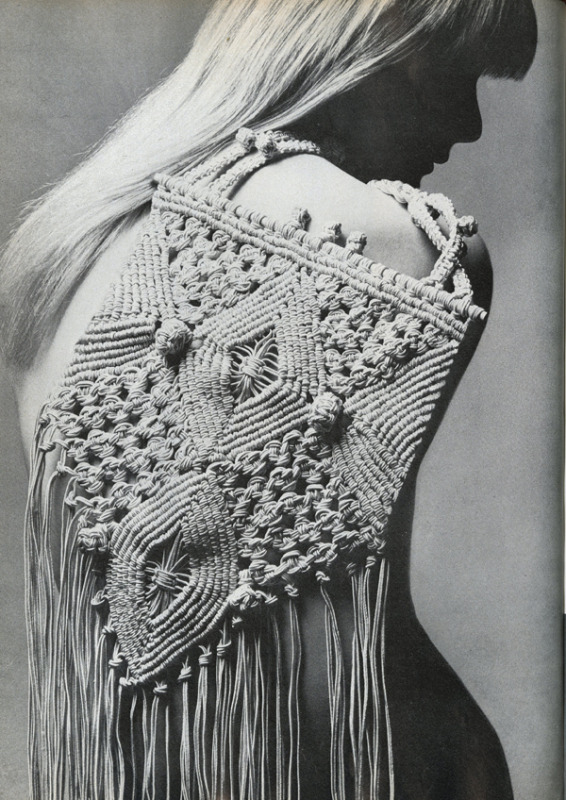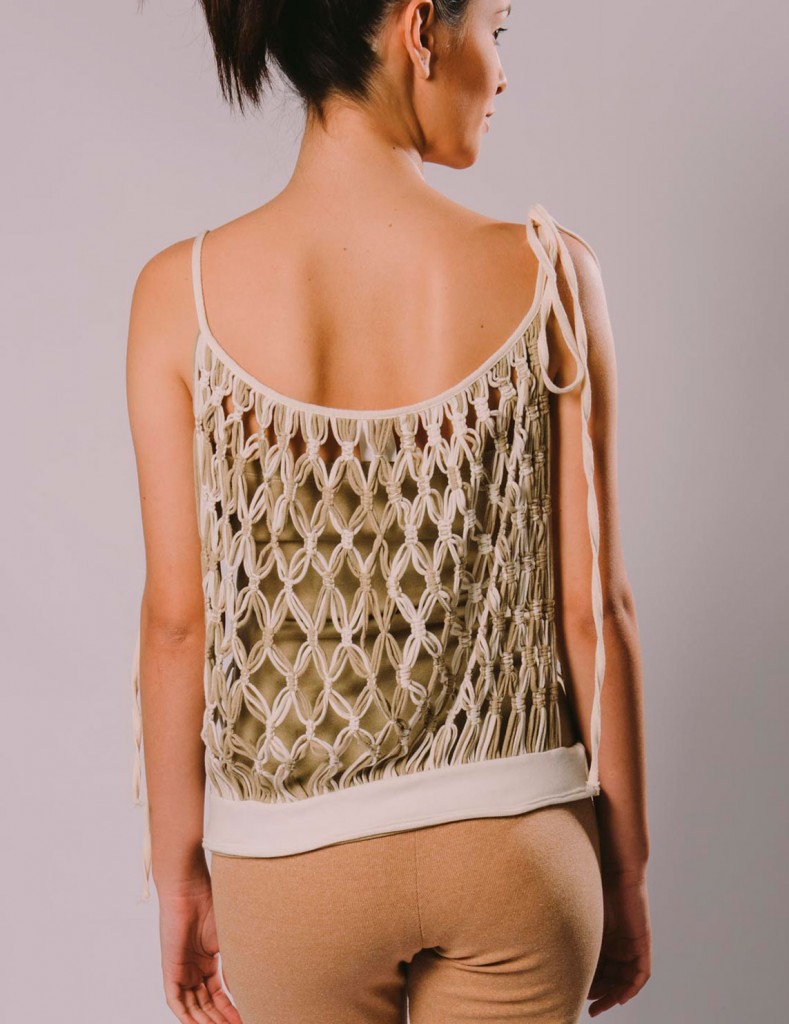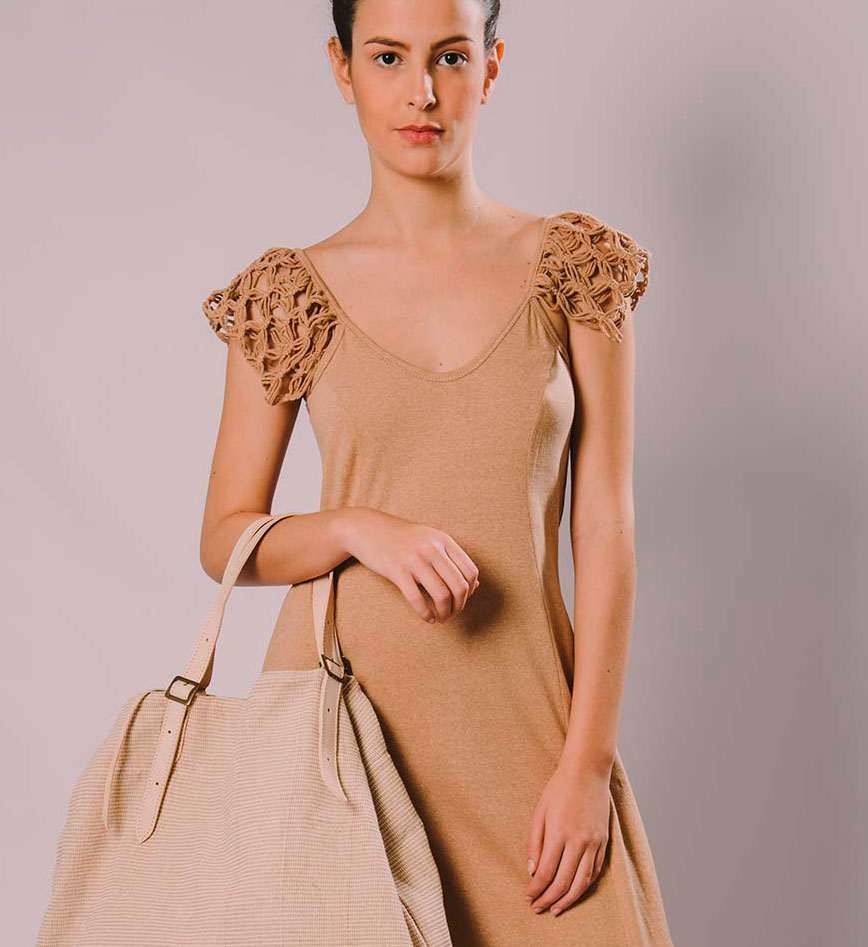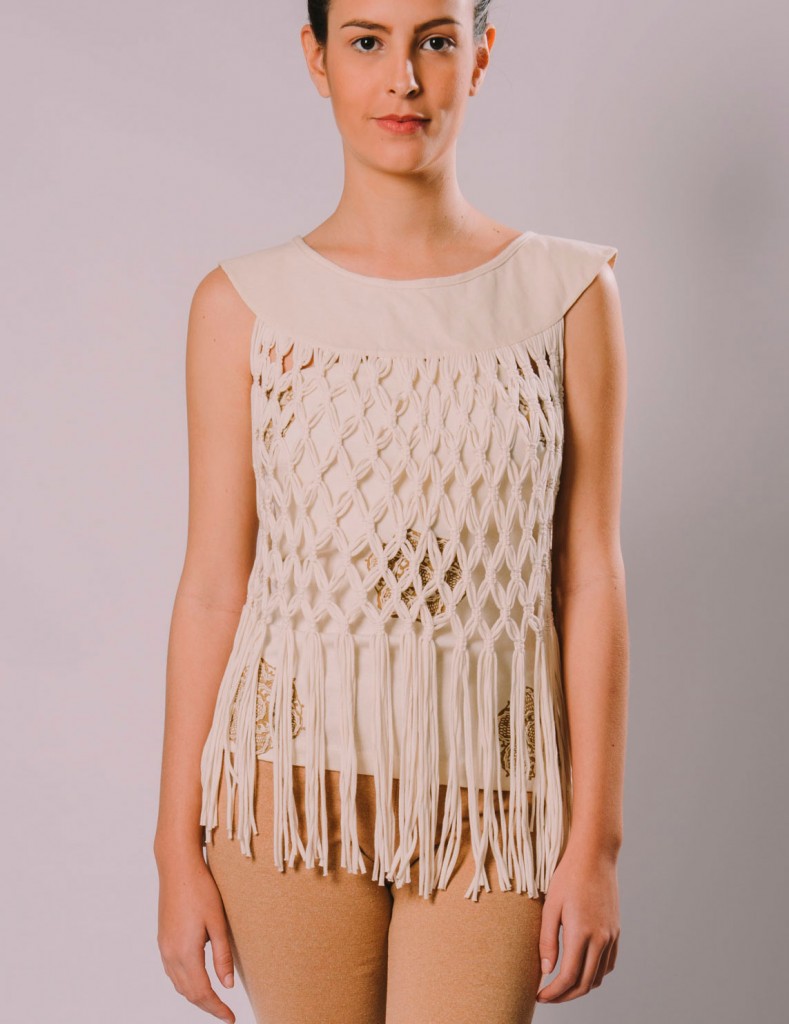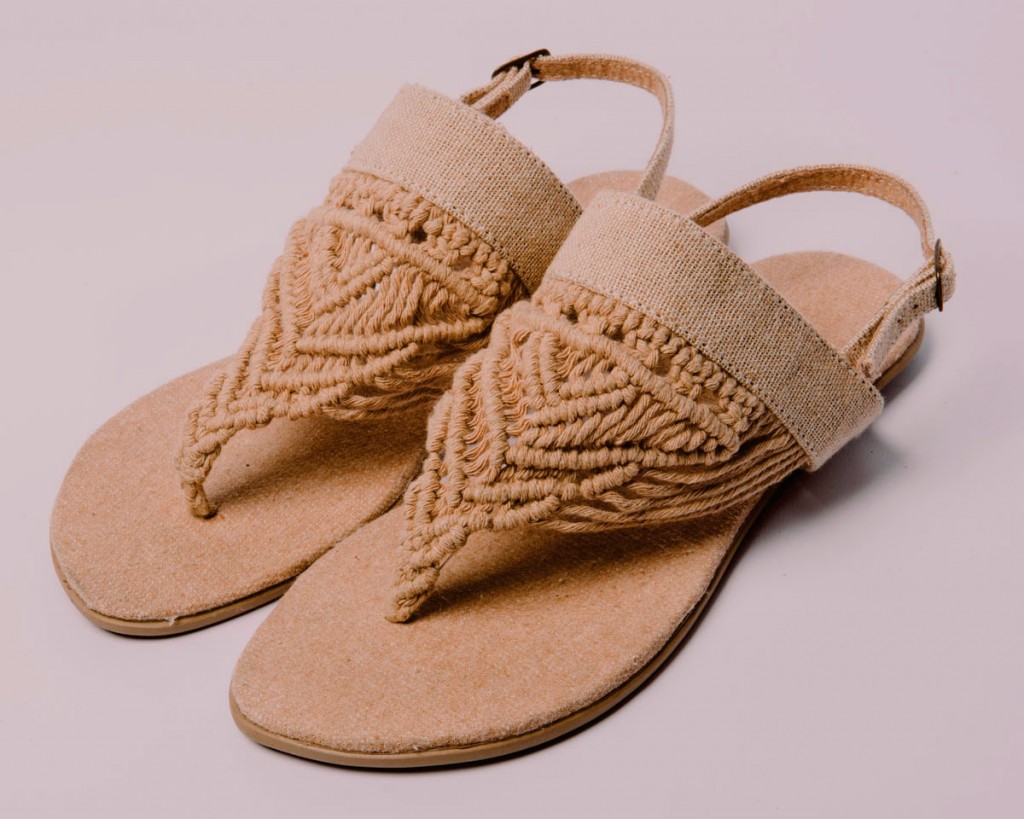Macramê knots in organic color cotton fashion

Among the first spinning techniques and thread entanglement in weaving history, Macramê knots (Migramach) are very old. Studies indicate Turkey as the official place of origin, but there is information on the technique in China and in Egypt in 3000 BC.
In Europe, the Spanish and Portuguese were the first Europeans to have contact with Macramê. They learned the technique through the Moors who had conquered the Iberian Peninsula.
Macramê arrived in Brazil by the Portuguese colonizers. It began to be developed by women who wove their wedding trousseau. Later, the technique was taught to slaves and became popular.
Macramê gained notoriety during the hippie movement in the United States and entered the fashion industry. Currently, Macramê is seen in cheap jewellery sold by streets vendors in major cities as well as in top brands shops in shopping centers.
In the Natural Cotton Color group—NCC Ecobrands, Macramê is used with sophistication by designers. The pieces are made from mesh or organic color cotton yarn of varying thickness and are designed with two types of basic laces: Macramê and Festonê. The products are timeless and go well with any other piece in the wardrobe of stylish people who like unique pieces.
Handmade fashion, piece by piec, by Natural Cotton Color – NCC Ecobrands. Check out the options in the virtual store.
Source History of Macramê
Colton Virginia, ed. (1979). Complete Guide to Needlework. P. 445. ISBN 0888500858.
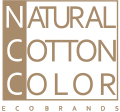 Organic and Natural Cotton Color
Organic and Natural Cotton Color
